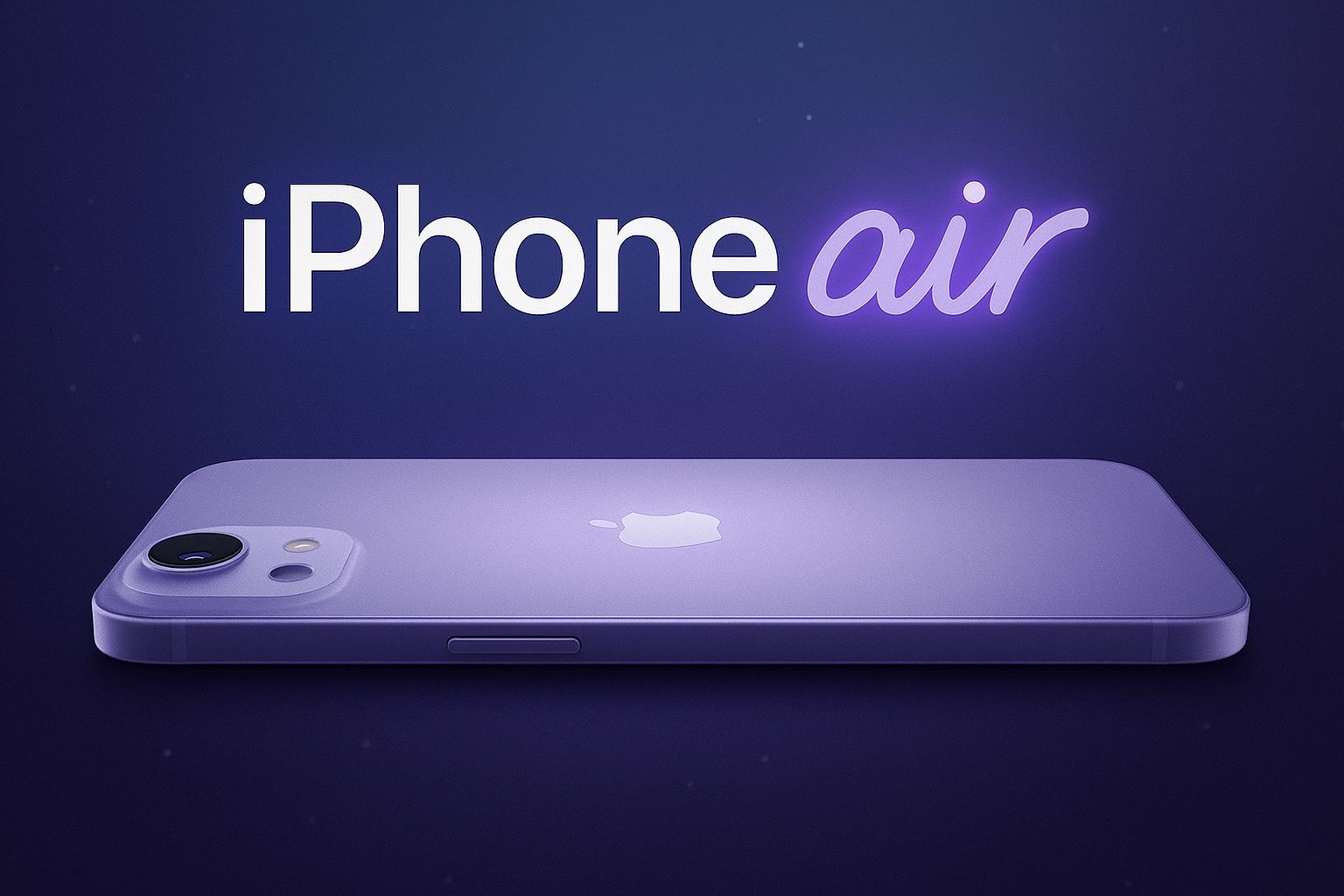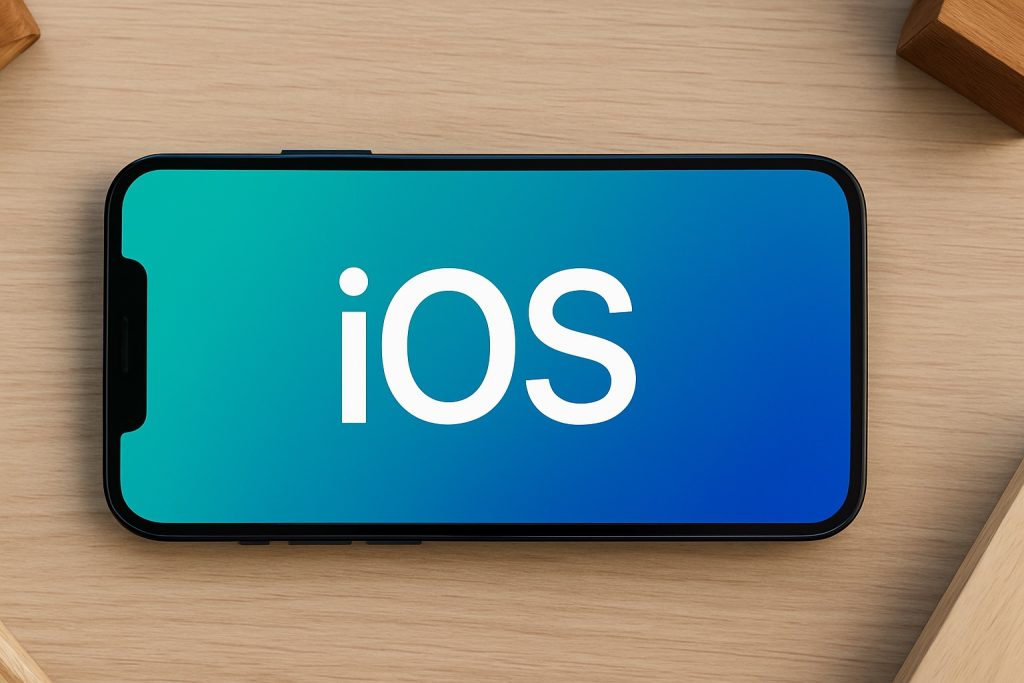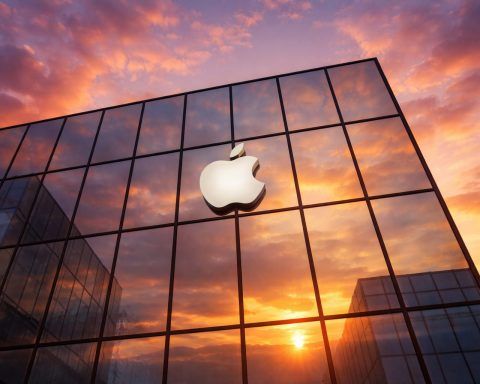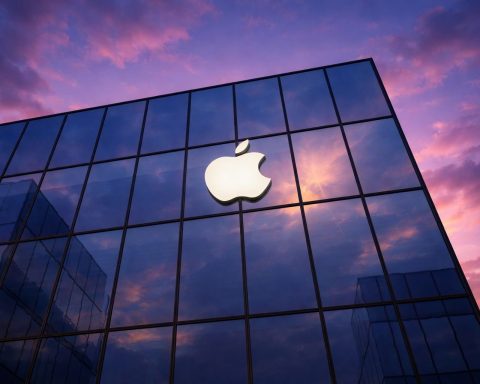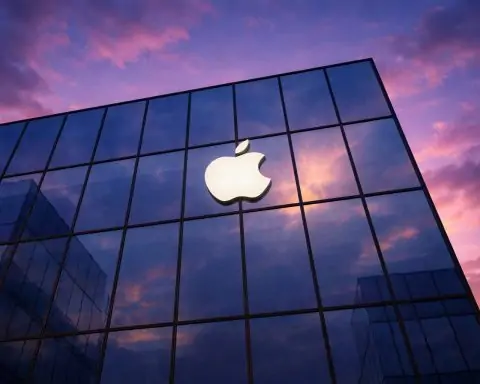- The iPhone 17 lineup will consist of four models—iPhone 17, iPhone 17 Air, iPhone 17 Pro, and iPhone 17 Pro Max—replacing the Plus with the Air and delivering 120 Hz ProMotion LTPO OLED across all, with sizes 6.3″ for the base and Pro, ~6.6″ for the Air, and 6.9″ for the Pro Max, slated for a September 2025 release and price tiers around $799, $899, $999, and $1199 respectively.
- The iPhone 17 Air is reportedly ~5.5 mm thick, uses a titanium‑aluminum frame, ~6.6″ display, ~145 g weight, is SIM‑free (eSIM only), and marks the first iPhone to use Apple’s in‑house C1 5G modem with 12 GB RAM.
- The iPhone 17 Pro and Pro Max are around 8.7 mm thick, adopt a half‑glass, half‑aluminum design, and feature a back full‑width horizontal camera bar, with the Pro Max rumored to gain a 48 MP periscope telephoto lens and 12 GB RAM on all Pro models.
- A new 24 MP front camera with a six‑element lens is being developed for the entire iPhone 17 lineup.
- All iPhone 17 models are expected to run on a 3 nm chip (likely the A19), with the Air, Pro, and Pro Max at 12 GB RAM and the base iPhone 17 at 8 GB RAM.
- A foldable iPhone, codenamed “iPhone Fold,” is targeted for a late‑2026 to 2027 debut with a book‑style inner display (~7.6–7.8″) and an outer ~5.5″ display, aiming for a nearly crease‑less design.
- Rumors also suggest a side‑button Touch ID instead of Face ID and an under‑display interior selfie camera for the foldable iPhone Fold.
- The 2025 iPad Pro refresh is slated to adopt the M5 chip on 11″ and 13″ OLED models around October 2025, built on a 3 nm process and priced about $999+ and $1,299+ respectively.
- The iPad Air, after an M3 update in March 2025, is expected to move to an M4 in 2026, with 11″ and 13″ models priced at roughly $599 and $799, and a new Magic Keyboard and iPadOS 19 support.
- Apple is planning a broad MacBooks update with no new models in late 2025, then M5‑powered MacBook Pro and Air launches in early 2026, along with an anticipated OLED MacBook Pro redesign in 2026 featuring thinner chassis and potential notch removal or hole‑punch camera on 14″ and 16″ models.
Apple Product News and Rumors for June–July 2025
July 2025 – A wave of Apple product news and credible rumors has emerged in June and July 2025, shedding light on upcoming devices. From the iPhone 17 lineup – including a new ultra-thin “Air” model and even whispers of a foldable iPhone – to the latest on iPads with M4 chips, MacBook upgrades toward M5 chips and OLED displays, and updates on Apple Watch, Vision Pro, AirPods, and HomePod, here is a detailed roundup of what we know so far.
iPhone 17 Lineup: Major Changes and New “Air” Model
Apple’s 2025 iPhone lineup is expected to introduce four models: the base iPhone 17, a new ultra-thin iPhone 17 “Air”, and the usual iPhone 17 Pro and 17 Pro Max – with no Plus model this year. The Plus is being replaced by the 17 Air, a mid-tier device designed to slot between the base and Pro iPhones in price and features. All iPhone 17 models are rumored to adopt ProMotion 120 Hz LTPO OLED displays, eliminating the 60 Hz limitation on non-Pro iPhones. They’ll also grow in size: the iPhone 17 and 17 Pro will each have 6.3‑inch displays (up from 6.1″), the Air ~6.6″, and the Pro Max 6.9″. Notably, the standard iPhone 17 is being upsized to 6.3″ to match the Pro, and the Air fills the gap between 6.3″ and 6.9″.
Leaked dummy models of all four iPhone 17 variants (from left: iPhone 17, iPhone 17 Air, iPhone 17 Pro, and iPhone 17 Pro Max) show the new designs – the ultra-thin 17 Air with a single centered camera, and Pro/Pro Max models with a full-width horizontal camera bar.
Design & Build: The iPhone 17 Air is dramatically slim – around 5.5 mm thin at its chassis (nearly 2 mm thinner than an iPhone 16 Pro) – making it the thinnest iPhone ever. To maintain rigidity at this extreme thinness, Apple will use a titanium-aluminum alloy frame for strength and has reportedly scrapped plans to go any larger than 6.6″ to avoid bend issues. Impressively, the 17 Air is said to be “almost as thin as the side buttons” in prototype form. In contrast, the iPhone 17 Pro models will be thicker (around 8.7 mm) and drop the stainless steel/titanium frame used in recent generations in favor of a lighter aluminum frame – a notable design reversal that brings the Pro iPhones back in line with iPad/MacBook styling.
All models will feature flat OLED panels (no folding displays here yet) with the familiar Dynamic Island cutout. Rumors conflict on whether the Dynamic Island will shrink – one analyst claims Apple’s new metalens Face ID could allow a narrower cutout on all iPhone 17 models, but Ming-Chi Kuo believes the Dynamic Island will remain the same size as on iPhone 16. Face ID under the display isn’t expected until later; for 2025 the front sensors should stay as-is.
Camera Layout: Apple appears to be shaking up the camera bump design. iPhone 17 Pro and Pro Max are rumored to adopt a new horizontal camera bar spanning the back – resembling a Pixel-style visor. Leaked dummy units show the Pro models’ triple lenses arranged horizontally, with the flash and LiDAR sensor repositioned to the side. Even the thin iPhone 17 Air is said to have a single rear camera housed in a centered horizontal “pill” bump. This means the Air would sacrifice the usual ultra-wide lens to keep its profile slim. The base iPhone 17 is expected to retain a smaller dual-camera bump much like the iPhone 16’s (two lenses stacked vertically). On the Pro Max, the telephoto camera is getting a boost – rumors point to an upgraded 48 MP periscope tele lens (versus the current 12 MP) for better zoom. Across the lineup, a new 24 MP front camera with a six-element lens is reportedly in development to improve selfie quality.
Specs & Performance: All four iPhone 17 models are expected to run on Apple’s next-gen 3 nm silicon – likely the A19 chip (with the standard 17 possibly using a non-“Pro” variant). Notably, memory is getting a bump. According to a reliable leak, the iPhone 17 Air, 17 Pro, and 17 Pro Max will each feature 12 GB of RAM, up from 8 GB in current models [1] [2]. The base iPhone 17 will stick with 8 GB RAM [3]. This extra memory (and the cutting-edge chip) should help the Air and Pros power their 120 Hz displays and advanced camera features smoothly. Despite earlier speculation, all iPhone 17 models are expected to get 120 Hz LTPO displays, so Apple is no longer reserving ProMotion for the Pro tier. The entire lineup will also likely support always-on display modes thanks to LTPO (though Apple might still reserve Always-On for Pro models via software).
Battery life is a concern with the super-thin Air, but Apple is reportedly using space-saving measures (like eSIM-only design with no physical SIM tray) to free up room for the battery. The 17 Air will also debut Apple’s own C1 5G modem – the first iPhone to use an in-house modem chip instead of Qualcomm’s. This allows Apple to tightly integrate communications and potentially save power, though the standard 17 and Pro models will continue with proven Qualcomm modems in 2025. All iPhone 17 models are expected to support the latest Wi‑Fi 7 as well; interestingly, at least one model (likely the Air) will use a new Apple-designed Wi‑Fi 7 chip, as a test run before wider adoption.
| Model (Sept 2025) | Display & Body | Chip & RAM | Cameras | Notable Features / Changes |
|---|---|---|---|---|
| iPhone 17 (base) | 6.3″ LTPO OLED, 120 Hz (up from 6.1″); ~8.3 mm aluminum frame | A18/A19 chip (next-gen); 8 GB RAM | 48 MP wide + 12 MP ultra-wide (dual lenses); vertical pill bump | Few exterior changes – looks like iPhone 16. Larger screen; ProMotion finally on base model. Priced around $799. |
| iPhone 17 Air (new) | 6.6″ LTPO OLED, 120 Hz; ultra‑thin ~5.5 mm chassis (thinnest iPhone ever) | A19 chip (flagship-class); 12 GB RAM | 48 MP single rear camera; centered horizontal camera bar | New mid-tier model replaces “Plus”. No SIM slot (eSIM only). First to use Apple’s C1 5G modem. Super lightweight ~145 g. Priced between base & Pro (~$899). |
| iPhone 17 Pro | 6.3″ LTPO OLED, 120 Hz; ~8.7 mm body with new half-glass, half-aluminum design | A19 Pro chip; 12 GB RAM | Triple-lens rear camera in full-width horizontal bump (wide, ultra-wide, 48 MP tele) | Frame material switches to aluminum (dropping steel/titanium) for lighter weight. Likely adds upgraded periscope telephoto lens. Wi‑Fi 7 support. ~$999 starting price. |
| iPhone 17 Pro Max | 6.9″ LTPO OLED, 120 Hz; largest form factor | A19 Pro chip; 12 GB RAM | Triple-lens rear camera (horizontal bump), 48 MP periscope telephoto upgrade | Top-tier flagship; massive battery. Camera visor design looks more proportional on big 6.9″ body. Expected ~$1199+ price. |
Colors: Apple is testing fresh finishes – including new green and purple shades – for the iPhone 17 lineup. Early leaks suggest the base models will come in black, silver, blue, green, and purple. The Air may get its own palette (possibly black, silver, gold, light blue) according to dummy unit reports. Final colors will be revealed at launch.
Release Timing: Apple is expected to launch iPhone 17 series in September 2025, following its usual fall schedule. Production rumors indicate Apple is already trial-manufacturing components. With the iPhone 17 Air representing a new form factor, Apple will likely highlight it heavily at the keynote. Pricing is rumored to stratify accordingly: the base iPhone 17 roughly $799, the Air around $899 (positioned as a step up with its premium design), and Pro models starting around $999 and $1,199 (USD) respectively – though Apple has not confirmed any pricing yet.
What About an iPhone Foldable? Apple’s Foldable “iPhone Fold” Rumors
Beyond 2025’s lineup, Apple’s first foldable iPhone is a hot rumor – but it won’t arrive alongside the 17 series. Multiple reports now point to 2026 as Apple’s target for a foldable device launch. In fact, Apple has reportedly moved a foldable iPhone into the prototype testing phase as of mid-2025, aiming for a late 2026 debut (as part of the iPhone 18 lineup). Analyst Ming-Chi Kuo notes that Foxconn is preparing to begin producing foldable iPhone hardware by late 2025, in time for a fall 2026 release. Display industry insiders Mark Gurman and Ross Young concur that 2026 looks likely for the “iPhone Fold,” with some sources suggesting early 2027 at the latest. In other words, don’t expect a foldable iPhone this year or next – Apple appears to be taking its time to get the technology (and user experience) right.
Leaks and patent filings have offered tantalizing details about Apple’s foldable phone design. Apple has been testing both clamshell (flip-phone) styles and book-style folding prototypes. Initially a Galaxy Z Flip-like clamshell was rumored, but recent rumors coalesce around a book-style foldable – essentially an iPhone that opens into an iPad Mini–sized display [4]. In this design, the device would have an outer smartphone display and camera when closed, and a roughly 7.6–7.8″ inner flexible display when opened up [5]. Current info points to an inner screen about 7.7″ (with a squarish 4:3 aspect ratio like an iPad) and an outer screen around 5.5″ [6]. Impressively, Apple is reportedly obsessed with eliminating the display crease seen on today’s foldables – going “regardless of cost” to develop new materials that make the fold “nearly invisible”. Bloomberg’s Mark Gurman says Apple’s foldable will have a crease that’s almost imperceptible when the screen is flat, giving it a clear cosmetic advantage over Samsung’s visible fold lines. He also notes Apple is engineering a “much higher‑quality hinge” mechanism for durability [7]. According to Gurman, these two factors (no crease and a robust hinge) will be key selling points of the device [8].
Under the hood, the foldable iPhone may eschew Face ID in favor of Touch ID – an interesting twist. Ming-Chi Kuo believes Apple might omit Face ID to save internal space and instead use a Touch ID fingerprint sensor on a side button for biometric unlock. This would mark a departure from Apple’s all-Face ID approach on flagship phones, but space is at a premium in a foldable’s hinge area. Another notable rumor is that the foldable’s interior selfie camera could be under the display (to avoid a notch/hole on the big screen), though it might not support Face ID’s TrueDepth due to technical constraints.
In terms of build, leaks suggest a book-style iPhone Fold with a durable titanium alloy hinge and chassis, and possibly a stainless/titanium liquid metal hinge component for strength. The device could be as slim as ~4.5 mm when open (extremely thin) and around 9 mm when folded shut – roughly the thickness of current Pro iPhones in a closed state. For comparison, that would make it thinner unfolded than an iPad Pro. To maintain that slim profile, Apple is rumored to use only two rear cameras on the foldable (vs. three on Pro iPhones). Kuo expects a dual-lens rear camera system plus a front camera on the outer screen – more akin to an iPhone 15’s camera count, not the triple-lens of Pro models. Camera quality, however, should be high; one leak claims the inner display will even have an under-display camera for FaceTime, complementing a normal selfie camera on the cover screen.
Finally, when will we see it? Most insiders point to Fall 2026 for the first-gen foldable iPhone launch. Kuo speculates it will land alongside the iPhone 18 Pro lineup (making late 2026 a massive launch season). Some sources like TrendForce are a bit more cautious, suggesting 2027. Notably, Apple seems to have pivoted to launching the iPhone Fold before any foldable iPad or Mac – earlier rumors of a foldable iPad coming first have died down. Apple’s roadmap reportedly even eyes a 2nd-gen foldable iPhone in 2027, the year of the iPhone’s 20th anniversary. For now, though, Apple is content to watch the foldable market and ensure that when it enters, it can “wow” with a creaseless design and seamless iOS experience optimized for folding screens. In short: the foldable iPhone is coming, but Apple fans will need to be patient for another year or two.
iPad Updates: iPad Pro on M4 → M5, and New iPad Air/Mini Plans
Apple’s iPad lineup in mid-2025 is in a transitional phase, with recent hardware upgrades and more on the horizon. The flagship iPad Pro was overhauled in 2024 with significant changes – and another refresh is expected in late 2025 – while the iPad Air just received a boost, and a future OLED iPad Mini is rumored down the line.
iPad Pro – M4 and M5 Chips: In May 2024, Apple launched new iPad Pro models featuring the M4 chip and OLED displays. This was a major upgrade: the 2024 iPad Pros introduced Apple’s first OLED screens on an iPad (11″ and 13″ models) and moved from the M2 (2022) directly to a more advanced M4 chip. The M4 iPad Pro brought a slimmer design as well, with Apple touting it as the thinnest iPad Pro ever at ~5.9 mm thick. Fast forward to 2025 – those M4 iPad Pros are now about a year old. According to Bloomberg’s Mark Gurman, Apple is planning to update the iPad Pro again in fall 2025 with an even newer M5 chip. In fact, Gurman reports the next iPad Pro refresh is on track for around October 2025 and will debut Apple’s M5 silicon in an iPad, roughly ~17 months after the M4 launch. This suggests Apple has shifted the iPad Pro to an ~18-month upgrade cadence. Notably, the 2025 iPad Pro update is expected to be mostly internal – “a chip-and-ship” upgrade to M5 – without major design changes. The 2024 OLED design will carry over, and the 2025 models will look essentially the same, just with the faster M5 (built on an enhanced 3 nm process) bringing better performance and efficiency.
Apple is, however, experimenting with new display technology to further slim the iPad Pro’s bezels in the future. One report says Apple is considering a new chip-on-film display driver from LG that could reduce the border size. It’s unclear if that will be ready in time for the M5 models or saved for a later redesign. Pricing for the M5 iPad Pros should remain in the same ballpark ($999+ for 11″, $1,299+ for 13″), barring external factors.
iPad Air – M3 in 2025, M4 Next: The iPad Air received a significant (and somewhat quiet) update in March 2025. Apple released a new iPad Air with the M3 chip, doubling its performance over the previous M1-based Air. Apple also introduced, for the first time, a larger 13-inch iPad Air alongside the 11-inch model – positioning the Air as a more affordable big-screen tablet compared to the 12.9″ iPad Pro. The M3 iPad Air also came with a new Magic Keyboard accessory and features aimed at what Apple calls “Apple Intelligence” (on-device machine learning for things like the new Photos Clean Up tool and Notes Image Wand). Despite these enhancements, Apple kept the iPad Air’s price the same (starting at $599 for 11″ and $799 for 13″), making it a strong value mid-range tablet.
Looking ahead, rumors suggest the iPad Air will leap again – to an M4 chip – in early 2026. Mark Gurman’s roadmap notes an “iPad Air with M4, expected around March/April 2026.”. That implies Apple might skip an Air update in 2024 (since one just came in 2025) and give it a roughly one-year cadence after the M3. With the M4, the iPad Air would gain performance on par with the 2024 iPad Pro (since those had M4), albeit without the Pro’s OLED display or 120 Hz ProMotion. No design overhaul for the Air has been rumored – it already shares the flat-edged look and supports accessories like the Pencil and Magic Keyboard. The main upgrade will be silicon, keeping the Air fresh and closer to the Pro in speed.
iPad Mini – Future OLED Upgrade: The iPad Mini has not seen a new model since late 2021, and fans are wondering if Apple will update it. Despite some speculation that Apple might discontinue the Mini in favor of foldables, credible leaks say Apple is actively developing a next-gen iPad Mini – and it will feature an OLED display [9]. According to a leak on Weibo (via sources like Digital Chat Station), the iPad Mini 7 is slated for the second half of 2026 and will adopt Samsung-made OLED panels. This would mirror the iPad Pro’s move to OLED, bringing the Mini superior contrast and color. The same leak indicates Apple is not axing the Mini – it will coexist alongside any foldable iPhone, refuting rumors that a folding iPhone would replace the Mini’s niche. The timing (2026) suggests Apple is in no rush, possibly due to cost constraints of small OLED screens or waiting for a significant internal upgrade (perhaps an M-series chip in the Mini?). In the interim, there was chatter that Apple might give the iPad Mini a minor spec bump (e.g. an A16 or A17 chip) sooner. Indeed, some reports in late 2024 mentioned a hypothetical “iPad Mini 7” with an A17 Pro chip and more storage, but Apple did not announce any Mini hardware in 2024. If anything, Apple might have quietly improved the Mini’s availability in new markets, but no formal new Mini has been released as of mid-2025. Thus, the next substantial Mini upgrade looks to be a 2026 OLED model, potentially with features like ProMotion or improved Apple Pencil support – essentially scaling down the iPad Pro tech into the Mini form factor.
For now, the iPad Mini (6th gen, 2021) remains on sale with its A15 chip. It’s possible Apple could slip in a minor refresh in late 2025 (for example, an A17 chip Mini) to bridge the gap, but no solid evidence of that has surfaced in June/July 2025. Apple’s focus is clearly on the higher-end iPads and the Air.
Entry-Level iPad and Other iPad News: Apple’s basic 10th-gen iPad (10.9″ LCD, A14) launched in 2022. Gurman’s list mentions a “low-cost iPad 12th-gen with a faster chip” due in spring 2026, which suggests Apple might update the $329 iPad only every few years. By 2026 it could move to an A17 or so for the entry model. No new entry iPad was released in early 2025, and none is expected in late 2025, so that product line is quiet in this rumor cycle.
On the software side, iPadOS 19 (coming in fall 2025) is reportedly being designed to take advantage of the powerful new iPads. One tidbit: iPadOS 19 will launch around when the new M5 iPad Pros are ready, hinting at tight integration of new features for those devices. We might see more Mac-like capabilities as Apple continues to blur the line between iPads and laptops, especially with M-series chips now common across both.
MacBooks: M4 Takes Hold, M5 and OLED on the Horizon
Apple’s MacBook Air and Pro lineup has seen iterative improvements with Apple Silicon, and the rumor mill suggests no new MacBooks for the rest of 2025 – but big changes are coming in 2026. Here’s the state of the Mac notebooks:
Current Status (M4 Generation): Apple last refreshed its MacBooks in late 2024, when it introduced the M4, M4 Pro, and M4 Max chips in new 14-inch and 16-inch MacBook Pro models. That October 2024 overhaul added not just the new chips but also other upgrades like Thunderbolt 5 ports and minor display tweaks. Apple essentially skipped “M3” for the high-end Macs and jumped to M4, aligning with the A18 Bionic generation. Similarly, by early 2025 Apple’s MacBook Air (both 13″ and the newer 15″ Air) had been updated internally to M4 chips. These M4-based MacBooks have been on the market through the first half of 2025, delivering excellent performance and efficiency gains of Apple’s 3 nm silicon.
However, Apple appears unlikely to release any M5 Macs in 2025. According to Mark Gurman’s latest reports, Apple has decided to delay its planned M5 MacBook launch to early 2026. Initially, a modest M5 spec-bump for MacBook Pros was expected in late 2025, but Gurman says Apple is now “considering” moving all M5 MacBook Pro and Air releases into the first half of 2026 [10]. This aligns with Gurman’s July 2025 update that no M5-chip Macs will debut in 2025 at all [11] – essentially, the M4 MacBooks will remain the top offerings through this year. Apple’s reasoning might be that M5 would only offer a minor performance bump if introduced too soon, so they prefer to sync it with a larger redesign cycle.
Next Up: M5 and a Redesign in 2026? So what happens when 2026 rolls around? If Apple’s current plans hold, we should see new MacBook Pro (and likely Air) models in early 2026 featuring M5-series chips [12]. These would provide the usual CPU/GPU improvements (the M5 is expected to be built on TSMC’s improved 3 nm process, bringing better performance-per-watt). But more exciting is what comes after: Apple has been working on a major MacBook Pro redesign – described as a “true overhaul” – that was originally slated for 2026. This redesign is rumored to include a switch to OLED displays and an even thinner, lighter chassis for the MacBook Pro. Display analyst Ross Young and others indicate Apple’s suppliers will be ready to produce laptop-sized OLED panels by 2026, enabling an OLED MacBook Pro launch around that timeframe. OLED would bring benefits over the current mini-LED screens: higher contrast with true blacks, brighter HDR, and potentially better battery life due to power efficiency.
Apple’s design teams are also reportedly aiming to shave down the MacBook Pro’s thickness substantially. In fact, Gurman has hinted that the ultra-thin design of the iPad Pro (and even the upcoming iPhone 17 Air) is the “beginning of a new class of Apple devices,” and Apple wants to make MacBook Pros thinner over the next couple years without sacrificing battery or features. The challenge will be doing so while keeping the functionality (the 2021 MacBook Pro actually became thicker when Apple added back more ports). One leak from Omdia Research suggests Apple will remove the notch from the MacBook Pro’s display in the redesign – possibly using a punch-hole front camera instead. (Currently, MacBook Pros have a camera notch at the top of the screen; a hole-punch would be smaller and less obtrusive.) It’s not clear if Face ID will ever come to MacBooks, but a hole-punch camera would at least make the screen feel more expansive.
In summary, the roadmap is: no new MacBooks in late 2025, then M5-powered MacBook Air and Pro models by early 2026 (likely a spec bump in existing designs) [13]. Later in 2026 or beyond, a ground-up redesign of MacBook Pros brings OLED screens, thinner builds, and possibly other changes like that notch removal. The 14″ and 16″ MacBook Pros are expected to lead with OLED, and even the MacBook Air might eventually follow with its own OLED (Ross Young predicted an OLED MacBook Air could arrive around 2026 as well). If the redesign slips, it could be 2027 before we see those big changes – but they are definitely on Apple’s roadmap.
On the MacBook Air side, Apple released the 15-inch MacBook Air (M2) in mid-2023, and likely updated both 13″ and 15″ Air to M4 by early 2025. An M5 MacBook Air is now expected in 2026 alongside the Pros. No major design changes for the Air have been rumored; the Air was just redesigned in 2022 (with the notch display and flat body), so it will probably continue that design for a while. One potential update could be a next-gen 13-inch MacBook Air with an OLED display around 2026-27 if costs allow. For now, though, the MacBook Air remains Apple’s thin-and-light champion, and with M4 it’s extremely capable. Apple did introduce a new 15″ MacBook Air variant in 2023 and might consider other size/options in the future, but nothing concrete for 2025. Interestingly, some rumors earlier this year suggested Apple was exploring a low-cost MacBook (possibly using an iPhone-grade chip) to compete with Chromebooks in the education market, but we haven’t heard much on that front recently. If such a project exists, it might be separate from the main MacBook lines.
Software & Integration: Apple’s macOS is evolving in parallel. At WWDC 2025, Apple previewed macOS 26 “Tahoe”, which is slated for release in fall 2025. While not hardware, it brings new features that integrate Macs even more with other Apple devices. (For instance, enhanced Continuity features, or “Liquid” design tweaks that unify UI across iPadOS and macOS.) One interesting note: macOS Tahoe includes under-the-hood support for Vision Pro integration (Apple’s headset), which suggests future Macs could leverage spatial computing features. No Mac has cellular connectivity yet, but with Apple’s modem tech maturing, some speculate that by late 2020s MacBooks might get 5G capabilities, effectively blurring lines with iPad.
For now, those buying a MacBook in 2025 can do so knowing the current M4 models will remain top-tier until the bigger wave hits in 2026. And for those waiting, 2026 promises not just faster Macs but also better displays and form factors that will truly usher in the next era of Mac laptops.
Other Apple Products: Watch Series 11, Vision Pro Progress, AirPods & Home Devices
Beyond phones, tablets, and Macs, Apple’s ecosystem has a slate of other products. Here are the latest developments and credible rumors for Apple Watch, Vision Pro (AR/VR headset), AirPods, and HomePod/home devices as of mid-2025:
Apple Watch Series 11 and Next-Gen Wearables
Apple is expected to release its Apple Watch Series 11 in fall 2025 (likely alongside the iPhone 17). After 2024’s Series 10 models, the Series 11 rumors suggest mostly evolutionary changes. We could see a new S11 system-in-package chip that’s more efficient, potentially enabling slightly better battery life. The S9 chip in Series 9 (2023) and S10 in 2024 were already efficient, but Apple refining chip design (perhaps moving to 3 nm for the S11) could give a boost in performance or battery. Health features remain a focus: there is ongoing work on blood pressure monitoring for Apple Watch, and some industry watchers believe Series 11 could be the first to include a blood-pressure sensor or algorithm, though this isn’t confirmed. Similarly, Apple has been researching noninvasive blood glucose tracking, but that’s likely several years away. Other possible additions include improved sleep apnea detection or hydration tracking via existing sensors.
One significant display technology update was rumored: microLED screens for Apple Watch. An April 2023 analyst report claimed Apple might introduce a microLED Apple Watch Ultra in 2025, offering brighter and more color-accurate display than OLED. However, that plan appears to have been put on hold. As of March 2024, Apple canceled or indefinitely delayed its in-house microLED Apple Watch project. The company had spent years and significant R&D on microLED, but production proved too complex and costly, leading Apple to shelve the idea for now. As a result, Series 11 (2025) will continue using OLED displays, and the rumored microLED Apple Watch Ultra likely won’t materialize in 2025. (It may come much later, if Apple re-enters microLED development down the road.)
So what will Series 11 offer? According to MacRumors’ roundup of 2025 watch rumors, we may see a more advanced chip (S11), slightly better battery optimization, and possibly new health software features like stress monitoring or a mood tracker (leveraging breathing rate, heart rate variability, etc.). There’s also talk of Apple working on a new band or strap design that could house sensors or batteries, but nothing concrete for Series 11 has leaked. Design-wise, Series 11 will likely stick with the size options introduced in Series 7/8 (41 mm and 45 mm cases) and the same general shape (the “squared” edge design started in Series 7). watchOS 12 (coming in 2025) might enable new watch faces or widgets, but core hardware design seems stable.
For the Apple Watch Ultra, Apple released the second-gen Ultra (Ultra 2) in 2023 with an S9 chip and improved brightness. If Apple skipped updating Ultra in 2024 (unclear yet), it may launch an Ultra 3 in 2025 alongside Series 11. Given microLED is off the table, the Ultra 3 would likely carry an S11 chip and maybe new sensors (there’s a rumor about Apple testing depth sensors or body temperature 2.0 features for divers and extreme athletes). No major redesign for Ultra is rumored – it will remain 49 mm with a titanium casing. Apple could introduce new Ultra case finishes (like a darker titanium) or band styles in 2025 to keep it fresh.
Notably, Gurman’s report of Apple’s 2025 releases confirms new Apple Watch, Watch Ultra, and Watch SE models are planned for late 2025. That implies a 3rd-gen Apple Watch SE should debut in 2025 as well. The current Watch SE 2 (2022) uses an S8 chip and older design. The 2025 Watch SE 3 might adopt the newer Series 8/9 design with an Always-On OLED display and get an updated chip (perhaps S11 or an S10). It would keep price low while offering more capability – a nice boost for the budget-friendly Apple Watch line.
In summary, expect Apple Watch Series 11 (fall 2025) with an improved chip and maybe one headline health feature, Apple Watch Ultra (3rd gen) around the same time with incremental upgrades (no microLED as once thought), and an Apple Watch SE refresh to bring the SE closer to modern specs.
Apple Vision Pro and AR/VR Headset Developments
Apple’s Vision Pro – the ambitious mixed-reality headset unveiled in 2023 – is gradually making its way to market. By mid-2025, the Vision Pro (1st gen) has started reaching developers and early adopters in limited quantities (it launched at $3,499 in the U.S. in early 2024). Apple is continuing to lay the groundwork for this new platform:
- Vision Pro 1st-Gen Status: Apple is reportedly producing Vision Pro units at a modest pace and focusing on ensuring a quality experience. Supply chain reports claim Apple expected to ship on the order of 150,000–200,000 Vision Pro units in 2025 – a far cry from iPhone volumes, but reasonable for an ultra-premium device. Production issues (complex dual 4K displays, etc.) have kept yields low. Apple initially limited Vision Pro sales to the U.S., but plans to expand to more countries (UK, Canada, etc.) in late 2024 and 2025 as production scales. So by mid-2025, only a niche set of users have Vision Pros, and Apple is heavily courting developers to build apps for visionOS.
- Upcoming Software: At WWDC 2025, Apple previewed visionOS 2, highlighting improvements to hand and eye tracking, multi-user FaceTime in AR, and new immersive content options. visionOS 2 will ship in 2025 and will coincide with broader availability of Vision Pro. Apple is also working on tools to make porting iPad and Mac apps to Vision Pro easier, accelerating the app ecosystem growth.
- Vision Pro “2” and Future Models: Rumors indicate Apple is already preparing an updated version of Vision Pro. Mark Gurman reported that Apple is working on a second-generation Vision Pro with a faster processor (likely moving from the current M2+R1 setup to an M3 or M4-based SoC) and possibly a more comfortable design. This could launch as early as late 2025. In fact, analyst Ming-Chi Kuo predicted an M5-powered Vision Pro could arrive in late 2025, aligning with Gurman’s mention that an upgraded model might ship by then. Potential enhancements for Vision Pro 2 include a more powerful main chip to handle higher refresh rates and more simultaneous apps, improved AI capabilities on-device (for example, better environment mapping or gesture recognition), and a refined headband/strap for comfort. One specifically rumored tweak is a redesigned strap to make the device lighter on the face – an area some first reviewers noted could be improved.
- Lower-Cost Headset (“Vision One”): Apple is also rumored to be developing a more affordable mixed-reality headset to eventually reach a wider audience. However, this budget-friendly model is still years away. As of July 2025, reports suggest Apple’s cheaper AR/VR headset (“Vision One” or a non-Pro version) won’t launch for a few more years. It may arrive in 2026 or 2027 once Apple can substantially shrink costs (perhaps using lower-resolution displays or a single chip). For now, Apple is fully focused on the Pro tier device.
- Big Picture: Interestingly, MacRumors reports Apple has a “big plan for 5 new Vision products” under development. This likely encompasses the current Vision Pro, the next-gen Pro, the eventual cheaper model, and even longer-term ideas like AR glasses. While AR glasses (the dream of a lightweight glasses-like wearable) are likely many years out, Apple clearly views spatial computing as a platform worth sustained investment. The Vision Pro’s launch has been deliberately slow and methodical, akin to the original Macintosh or Apple Watch introductions.
In the near term, don’t expect a “Vision Pro 2” in 2024, but by late 2025 we could see Apple announce an upgraded Vision Pro with better performance and maybe a lower price or second SKU. Gurman says some at Apple consider the foldable iPhone and the Vision Pro to be two major initiatives leading up to 2027 (the iPhone’s 20th anniversary). By 2027, Apple might want a robust lineup: foldable iPhones, multiple Vision devices, etc., to mark a new era.
For now, those interested in Vision Pro should watch for expanded availability in 2025 and significant software updates that will improve the experience for early adopters. Apple’s recent marketing indicates many use cases: spatial photography, productivity with multiple giant screens, immersive sports and entertainment, and of course new styles of games and education apps. As developers continue to get their hands on Vision Pro, we’ll see more innovative demos – and Apple is likely to highlight some at events (possibly a dedicated fall 2024 event before launch in new countries).
Bottom line: Apple is playing the long game with Vision Pro. Sales in 2025 will be modest (a few hundred thousand units), but by 2026–27 Apple aims to iterate the hardware and broaden the lineup, positioning themselves strongly in AR/VR as the technology matures.
AirPods and Audio: What’s Next for AirPods Pro, Max, and More
AirPods have become a staple of Apple’s lineup, and there are a few notable updates in the pipeline:
- AirPods Pro 3: Apple’s second-generation AirPods Pro launched in late 2022 (with a minor USB-C case refresh in 2023). By mid-2025, they are due for a true successor. Rumors suggest the AirPods Pro (3rd Generation) are likely to launch around late 2025 (Q3/Q4), although some reports warn it could slip to 2026 [14]. If on schedule, a September 2025 debut alongside iPhone 17 is possible [15]. What’s new? AirPods Pro 3 are expected to feature new health sensors – heart rate monitoring from the ear, and possibly body temperature tracking – building on Apple’s increasing focus on wellness. They may also improve active noise cancellation and sound quality with a next-gen H3 chip. One leak claims AirPods Pro 3 will get ambient light sensors or infrared cameras in each earbud. These could be used to monitor heart rate and even blood oxygen via the ear skin. However, integrating those might be causing production delays, which is why analyst Ming-Chi Kuo believes the new AirPods may not arrive until 2026 if the tech isn’t ready in time. On the audio front, lossless audio support is a possibility. Notably, Apple hinted that Vision Pro can receive lossless audio from a new AirPods firmware, suggesting a future AirPods hardware could transmit Apple Lossless quality sound (perhaps using an updated wireless protocol). The AirPods Pro 3 might include this for use with Vision Pro and future iPhones. Design-wise, they’ll likely remain similar (in-ear with silicone tips), though some patent filings show ideas like built-in touch displays on the case – but those are exploratory. Pricing should stay around $249 unless major hardware additions push it higher.
- AirPods Max 2: Apple’s over-ear AirPods Max launched in December 2020 and have not had a hardware refresh yet. By 2025, they are quite overdue. Unfortunately for Max fans, the latest rumors indicate AirPods Max 2 won’t arrive until 2026 or 2027. Ming-Chi Kuo has said mass production of new AirPods Max is planned for late 2026 into 2027. So, no AirPods Max 2 in 2025. In the meantime, Apple gave the AirPods Max a mild update in 2024 by introducing new colors and replacing the Lightning port with USB-C on current units. Those changes came alongside AirPods 4 in late 2024. For the eventual AirPods Max 2, expected improvements include making them lighter (the first-gen are heavy), adding the H2 chip for improved connectivity and Adaptive Audio features, longer battery life, and perhaps new features like a replaceable headband or better Active Noise Cancellation. But since it’s far out, Apple has time to decide on features. For now, the original AirPods Max with slight revisions are what Apple is selling.
- AirPods (4th Generation): Apple did refresh the regular non-Pro AirPods recently. In September 2024, Apple introduced the AirPods 4 – which have an all-new open-ear design. These AirPods 4 come in two versions: one standard and one with built-in Active Noise Cancellation, a first for open-ear AirPods. Apple used an H2 chip in AirPods 4 to enable features like Adaptive Audio and even head-gesture controls (nodding to answer Siri, etc.). They also gave the AirPods 4 a smaller USB-C case that supports wireless and Watch charger charging. With AirPods 4 now out, we likely won’t see another update to regular AirPods until at least 2026 or beyond. The focus will shift to the Pros and Max.
- Hearing Health Features: A big theme Apple pushed with 2024’s AirPods announcements was hearing health. They unveiled that AirPods Pro 2 (with firmware + iOS updates) can function as a hearing aid of sorts – offering Conversation Boost, Adaptive Transparency for hearing protection, and even a tested Hearing Test feature in iOS 18. In 2025, we expect Apple to continue expanding AirPods’ hearing capabilities. AirPods Pro 2 will gain those hearing features in fall 2024 (as announced), and AirPods Pro 3 might take it further, potentially qualifying for certain regulatory approvals as assistive listening devices. This could be a significant differentiator for AirPods in the market, as no other consumer earbuds offer integrated hearing aid functions at that level.
In short, for 2025: No brand-new AirPods hardware launches are expected until late in the year (if AirPods Pro 3 make it). Apple will rely on its 2024 lineup: AirPods 4 (standard and ANC), AirPods Pro 2 (with new firmware features), and AirPods Max (201st gen with USB-C). By late 2025 or 2026, AirPods Pro 3 should arrive with health sensors and upgraded audio, and AirPods Max 2 in 2026–27 with a big redesign. Apple is also likely to keep improving the AirPods experience via software – e.g. iOS 19/20 may bring things like personalized volume profiles, additional Find My features, etc., to existing AirPods.
HomePod and Smart Home Devices
Apple’s presence in the smart home category currently centers on the HomePod and HomePod mini smart speakers, and integration with HomeKit. There have been a few rumors in this space:
- HomePod with Screen (“Smart Display”): Apple has been developing a HomePod-like smart home hub with a built-in display – essentially Apple’s answer to an Amazon Echo Show or Google Nest Hub. Early rumors suggested a 7-inch screen device could launch in 2024, but that didn’t happen. According to Mark Gurman, Apple is still working on this smart display/home hub, but the timeline now points to the first half of 2026 for its debut. Gurman’s July 2025 list explicitly mentions a “Smart home hub – expected in first half of next year” (2026). This device would likely combine an iPad-like display with a HomePod speaker base, running a variant of iOS focused on home controls, FaceTime, etc. Apple could position it in kitchens and living rooms for family use – controlling HomeKit devices, showing calendars, and so on. For now, though, it’s not imminent in 2025.
- HomePod mini 2: The HomePod mini was released in 2020 and has not been updated hardware-wise since. Apple did a minor update in late 2022 by enabling a temperature/humidity sensor that was dormant in the mini, but no new model. There have been scant rumors of a HomePod mini 2 – some reports in early 2023 suggested Apple was considering a late 2023/2024 refresh with a new chip and maybe new colors. However, by mid-2025, nothing has materialized. It’s possible Apple will quietly update the HomePod mini in late 2025 or 2026 with an S-series chip (the mini currently has an S5 chip). Given the relatively static nature of HomePod mini, this isn’t a huge rumor focus. It will continue to be sold at $99 and support Matter, Thread, etc., as is.
- HomePod 2nd Gen (2023) and future: Apple relaunched the full-size HomePod in Feb 2023 (2nd generation HomePod), after discontinuing the original in 2021. The 2nd-gen brought back the same design with slight acoustic tweaks and a temperature sensor. That product is still current in 2025. No rumors suggest another full-size HomePod in the immediate future. Apple likely considers the 2023 model sufficient for a few years. If anything, Apple could do a new color option to spark interest (e.g. a brown/tan HomePod to match the upcoming iPhone colors – pure speculation). But hardware-wise, the next big thing would be that HomePod with a screen in 2026.
- Other Home Devices: There have been wild rumors in past years of Apple exploring everything from smart plugs to even a soundbar with Apple TV functionality. Lately, one interesting tidbit is that Apple may be prototyping a combined Apple TV + HomePod + camera device for the living room (an all-in-one set-top box and speaker) – Gurman mentioned this in 2021/2022. No concrete updates on that in 2025 though. It’s possible that idea morphed into the aforementioned HomePod display hub, or it’s on the back-burner.
In the smart home software realm, Apple’s embracing of Matter and Thread standards means all new iPhones, iPads, and Apple TVs can control a wider array of third-party accessories. With iOS 18/19, Apple continues to refine the Home app. No specific June/July 2025 news on HomeKit beyond incremental updates. One small note: iOS 18 (2024) and iOS 19 (2025) are expected to improve the reliability of HomeKey (digital keys for smart locks in Wallet) and expand the regions supporting Apple’s Home internet services (like HomePod multi-user recognition, which expanded to more languages).
Conclusion: Apple’s Summer 2025 news and rumors paint a picture of a company balancing exciting new form-factors (the ultra-thin iPhone 17 Air, the foldable iPhone in the wings, Vision Pro’s immersive tech) with iterative improvements to staple devices (iPads, Macs, Apple Watch). If the rumors hold, the next 12–18 months will bring the most significant iPhone redesign in years, more Apple Silicon advancements (M5), and continued expansion into AR/VR and home devices. As always, Apple is tight-lipped officially – but the credible leaks from analysts, supply chain sources, and regulatory filings give us a compelling sneak peek at what’s coming out of Cupertino. Stay tuned for Apple’s fall 2025 event, which should confirm many of these details, and expect even more leaks as production for these devices ramps up in the months ahead.
Sources: The information above is compiled from credible reports by industry analysts (Ming-Chi Kuo, Mark Gurman, Jeff Pu, Ross Young), respected outlets like MacRumors, Bloomberg, 9to5Mac, and others during June–July 2025. Notable references include MacRumors’ “Everything We Know” roundups for iPhone 17, MacRumors guides on the foldable iPhone timeline, Gurman’s Power On newsletter insights on Vision Pro and Mac plans [16], and supply chain leaks aggregated by MacRumors, AppleInsider, and Macworld [17]. These sources are cited inline to substantiate each claim. All in all, Apple’s 2025 roadmap combines officially announced moves (like the M3 iPad Air launch) with credible leaks of what’s next, giving us a comprehensive preview of Apple’s near-future product lineup.
References
1. www.macrumors.com, 2. www.macrumors.com, 3. www.macrumors.com, 4. www.macrumors.com, 5. www.macrumors.com, 6. www.macrumors.com, 7. www.macrumors.com, 8. www.macrumors.com, 9. www.notebookcheck.net, 10. www.macrumors.com, 11. www.macrumors.com, 12. www.macrumors.com, 13. www.macrumors.com, 14. www.macworld.com, 15. www.macworld.com, 16. www.macrumors.com, 17. www.macrumors.com
